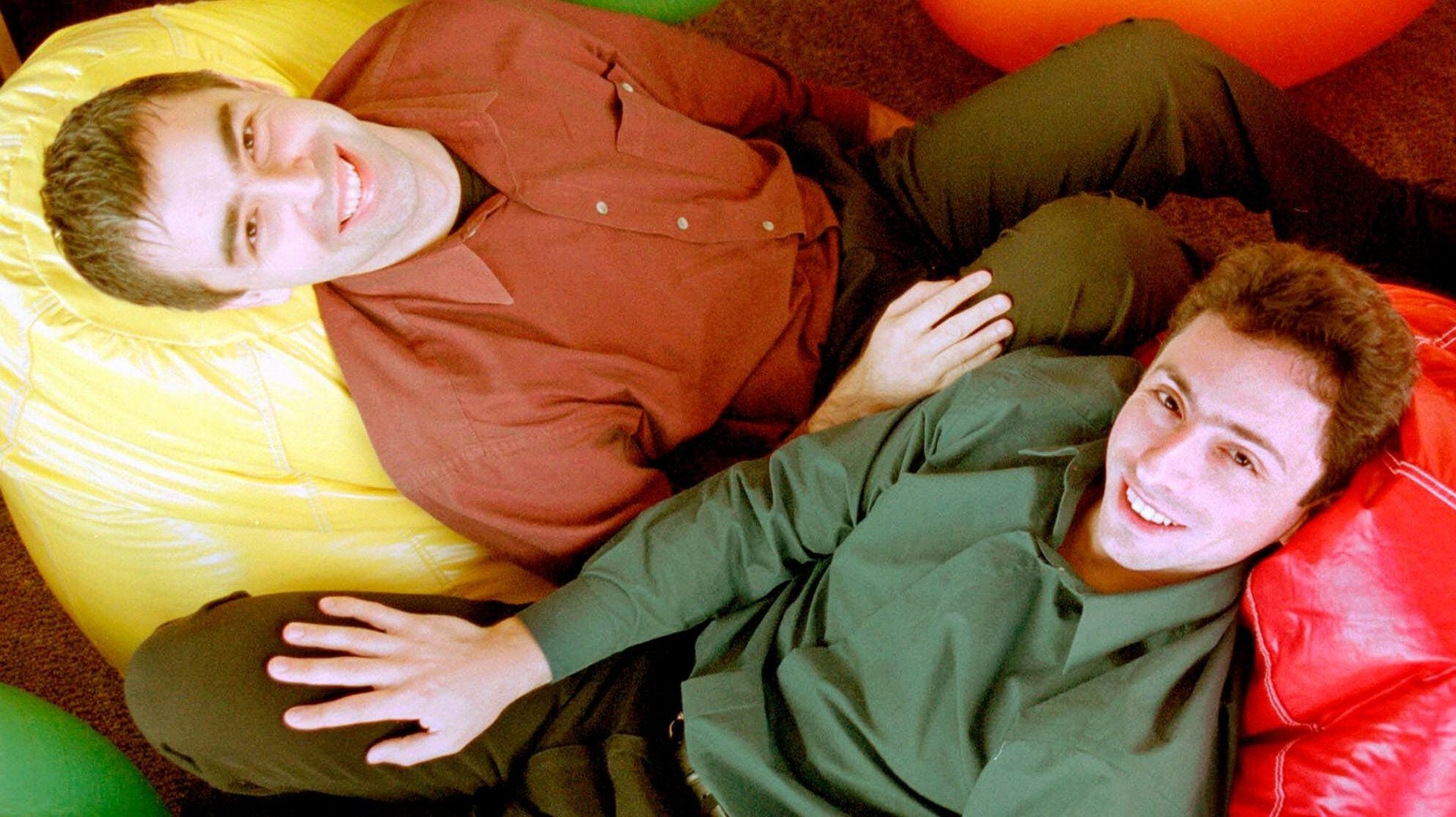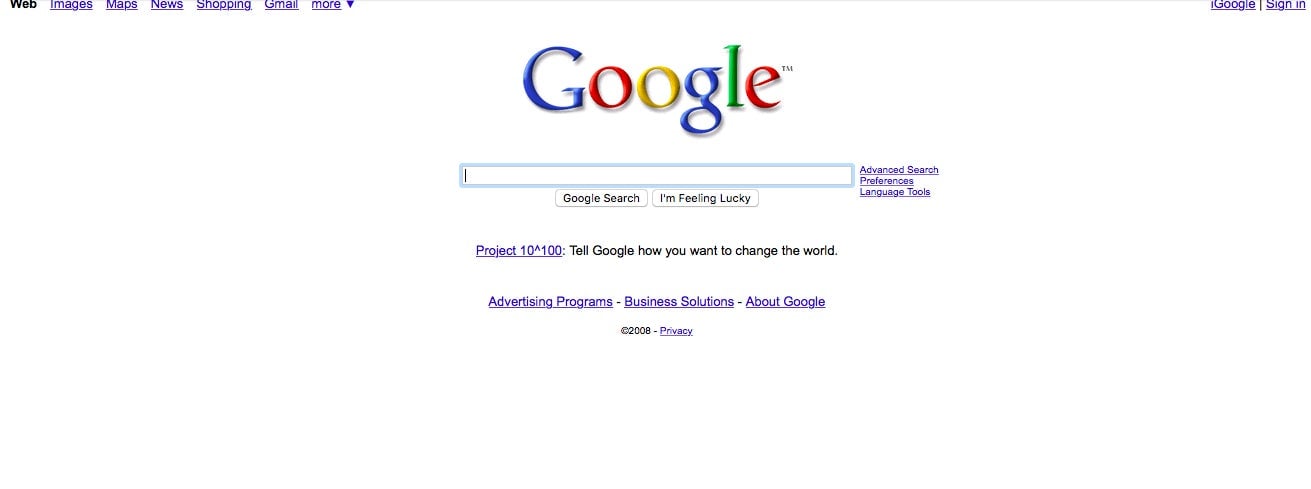Looking at Google.com, you’d barely know how much the company has changed in 20 years
Where would we be without Google during heated debates, lapses in memory, or when life’s mysteries plague us, such as why the sky is blue? The solution for many of us in those moments is to “just Google it.” It’s an action so ubiquitous that “to google” is now in the dictionary.


Where would we be without Google during heated debates, lapses in memory, or when life’s mysteries plague us, such as why the sky is blue? The solution for many of us in those moments is to “just Google it.” It’s an action so ubiquitous that “to google” is now in the dictionary.
The search engine is celebrating its 20th anniversary today (Sept. 27). The date—an arbitrary one, according to the company—commemorates the founding of Google in September 1998. The search engine was first created in 1996 by Sergey Brin and Larry Page as a research project while the two studied at Stanford University. Back then, it was called Backrub, because the system analyzed “back links” on the web to understand how important each webpage was, and lived on a server at the university. In 1998, the project caught the attention of Andy Bechtolsheim at Sun Microsystems, who invested $100,000 in it. Google incorporated on Sept. 4, 1998.
In the earliest screenshot of Google.com captured by the Internet Archive, from Nov. 11, 1998, the site doesn’t look all that different from the Google we know today. It was still a prototype then, but the spartan homepage featured a familiar primary-colored logo, search box, and “I’m feeling lucky” button, like it does today.
While not captured in this screenshot, the Google Doodle, special designs of the company’s logo used to honor certain events, was even around back then. The first one was used on August 30, 1998, days before the company was incorporated, when Brin and Page designed a doodle for the Burning Man festival as a sort of out-of-office message.

But under the hood, there have been massive changes since the early days. The search engine pulled ahead of competitors like Ask Jeeves (now Ask.com), Yahoo, and AltaVista over time in part because of its propriety page-ranking system, PageRank. It mapped links on webpages and used them as a measure of quality. Webpages that were cited more prominently and frequently around the web appeared more highly in search results.
By November 1998, Google had indexed roughly 25 million webpages. Today, Google says its search index contains “hundreds of billions” of webpages.
Google’s indexing algorithms, which change all the time, now go far beyond PageRank. The search engine uses more than 200 signals, or ranking factors, to answer search queries. The algorithms analyze the billions of Google searches per day to understand what we’re really after when we ask a question. And Google personalizes its search results for each user, factoring in things like where they’re located, what they’ve searched for and clicked on before, and what device they’re using.
The algorithms that ranked pages and delivered search results used to follow rules coded by humans. Today, they’re mostly run by artificial intelligence. Google rolled out a deep learning system called RankBrain in 2015 that helps generate the many of the search results we now see.
The search results pages got face lifts, too. In 1998, the results displayed in a list of text and links. Today, the results pages include sponsored search results and other advertising—its big money maker—as well as images, news, video, shopping, flights, and other search results.
And Google the company has grown massively, too. It now has one of the most popular mail apps on the planet, Gmail; tools like Google Maps and Google Drive are used by millions; Android is the world’s most popular mobile operating system; it builds its own smartphones and other devices; it has a burgeoning cloud business; and produces one of the world’s most popular web browsers in Chrome. Its parent company Alphabet, led by Brin and Page, is also working on self-driving cars, curing diseases, and beaming internet from balloons.
While its homepage remains humbly familiar, Google has gone from a Stanford research project riding on a $100,000 investment to a tech and advertising powerhouse that generated in $109 billion in revenue (pdf) last year for Alphabet, now a $825 billion company.